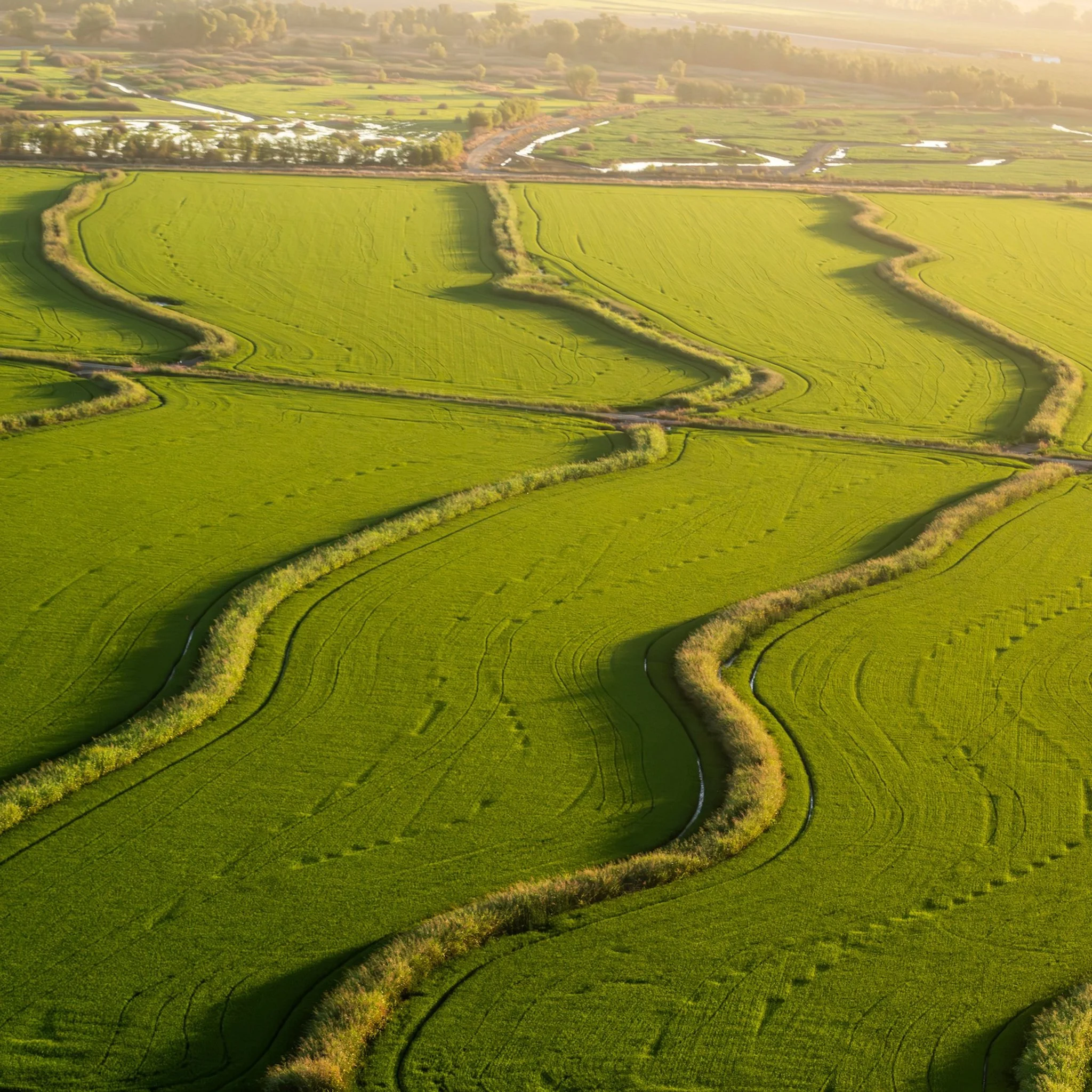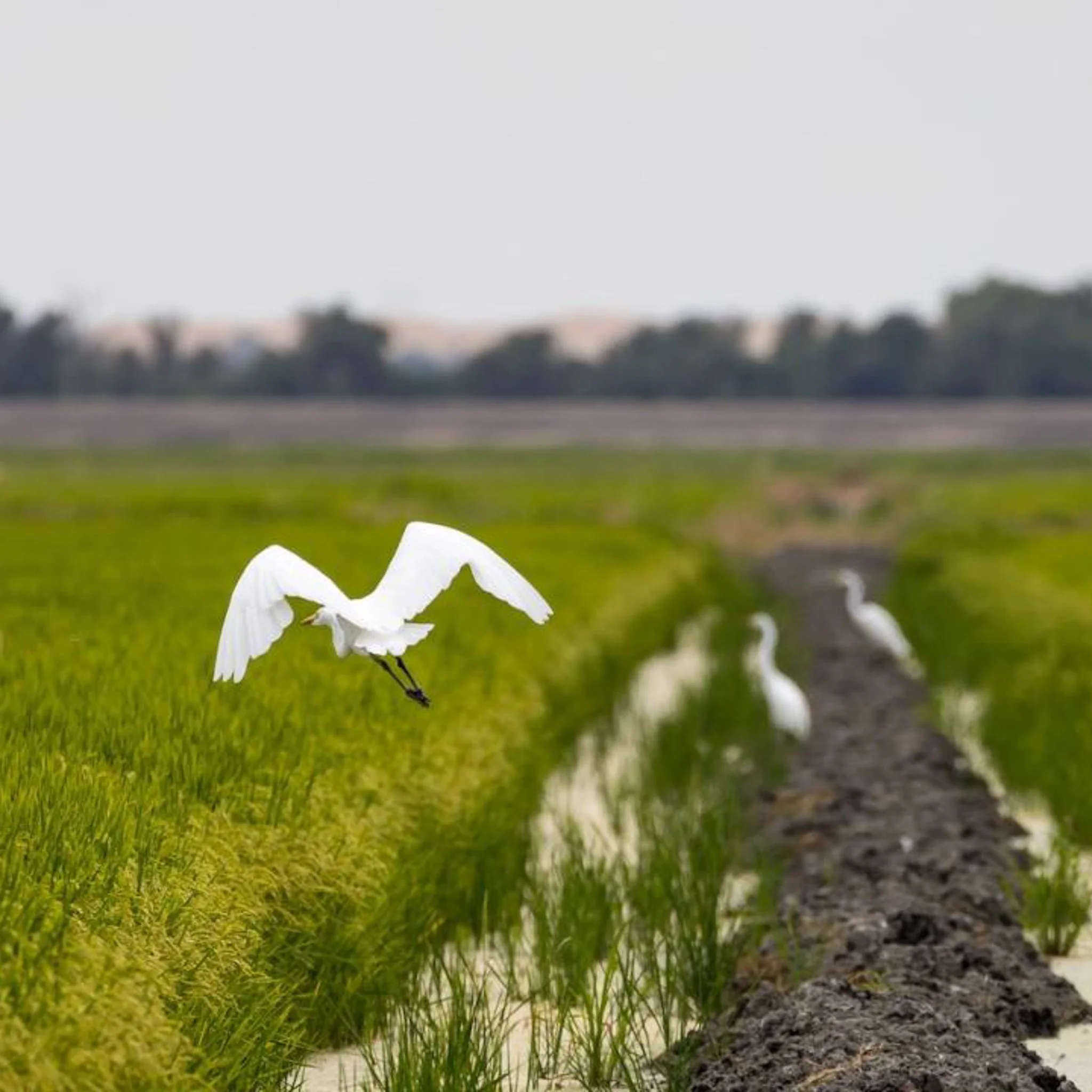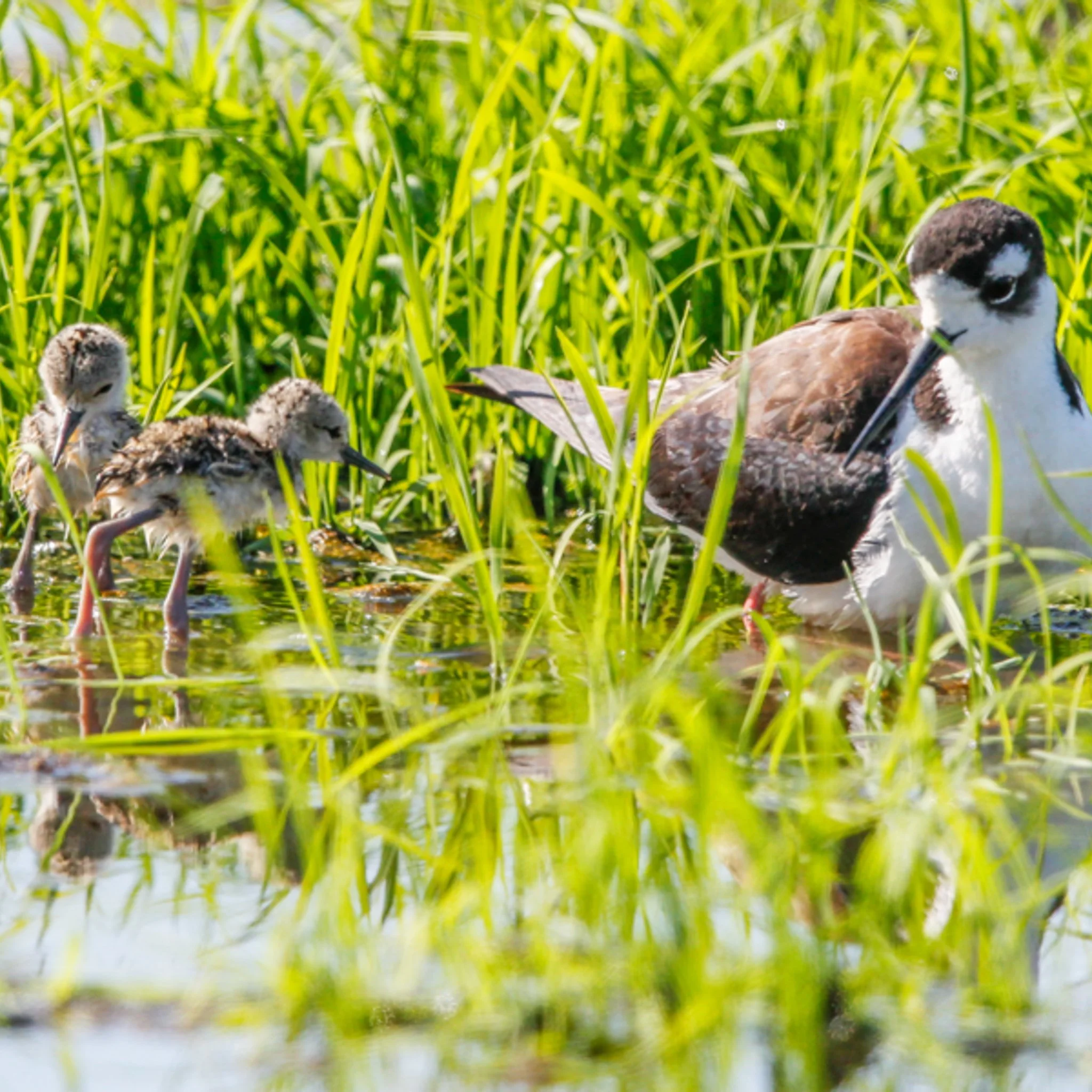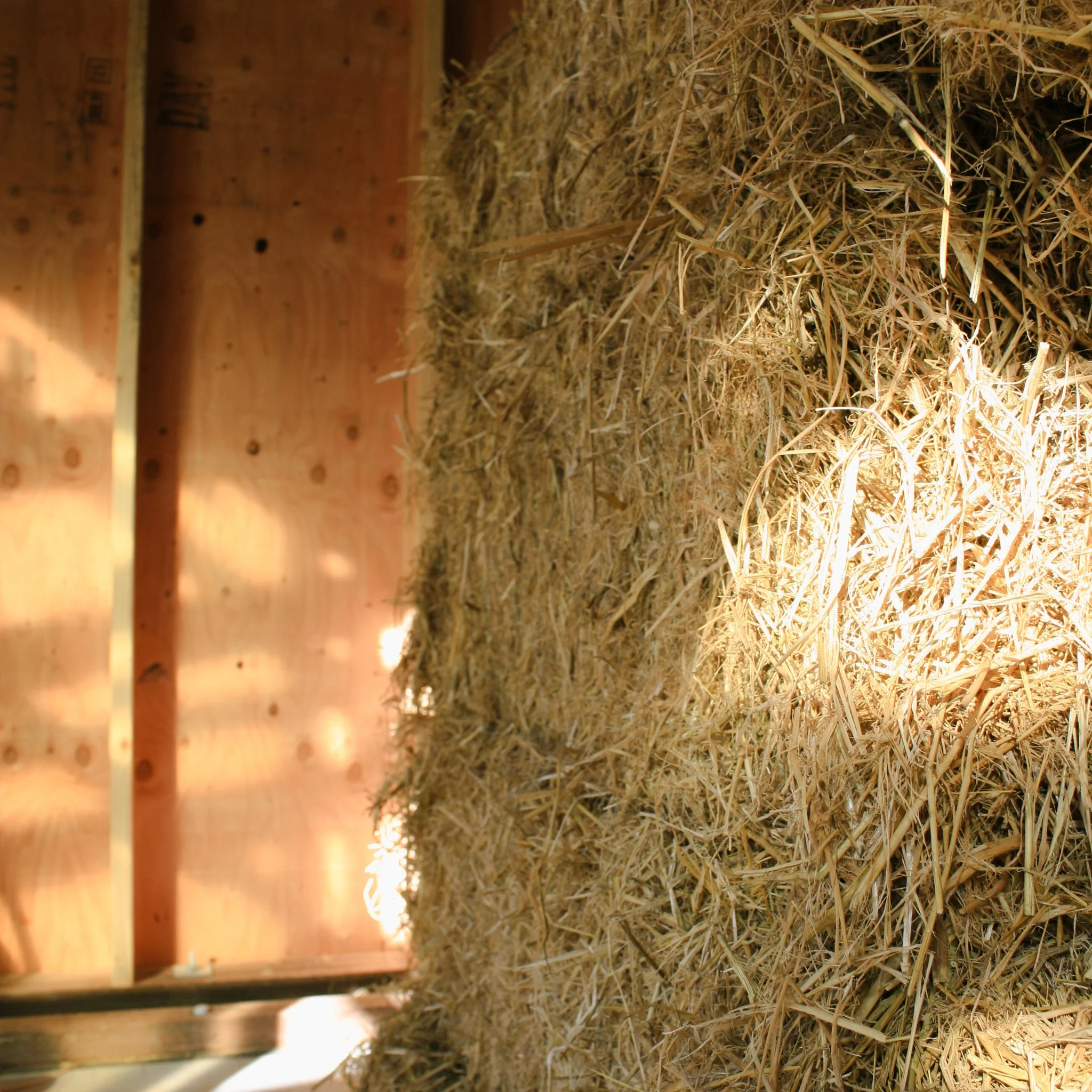California Rice Straw
Did you know that straw bale construction is one of the highest carbon-sequestering building techniques in the world, and that California grown rice just happens to make the best straw bales for building?
from “A Conservation Footprint for California Rice”, photo by Brian Baer
The straw widely available in California comes from the production of rice in the Sacramento Valley. California is the second largest rice producer in the United States and the main US producer of medium-grain rice including nearly all US produced sushi rice. The rice species in California have been developed for extremely high yields per acre with very large seed clusters on each stalk. To hold up those large seed heads the stalks are stronger and denser with a higher silica content than other rice, or other grains. This means they don’t biodegrade as well, often causing a problem for rice farmers who need to plant next year’s crop. But the extra strength makes it easier to pack the straw more densely into bales – making the perfect wall material.
(egret) from “A Conservation Footprint for California Rice”
On top of that, a report released in January of this year by UC Davis researchers outlines how flooded rice fields in the Sacramento River Valley also provide critical surrogate habitat for many species of birds, fish, and snakes. Even conventional large-scale rice production provides critical habitat, making it the only large-scale monoculture which has positive impacts for wildlife and ecosystem resilience.
(black-necked stilts) courtesy of the California Rice Commission
When used in conjunction with crop rotation and cover crops flooding makes rice one of the few large-scale grain crops that has the potential to form regenerative agricultural practices, like Lundberg Family Farms here in California. At Lundberg (no relation to my former job at Lundberg Design) they use a wintertime rotation where 1/3 of the field are left dry and fallow, 1/3 are flooded, and 1/3 are planted in nitrogen fixing cover crops. In the spring all the fields are flooded to begin planting rice for the summer crops.
(rice straw bales) photo by @rgavinknowles
In the case of our Strawbale ADU #1 project in Walnut Creek, we sourced our rice straw directly from a local farmer, Tye Giesbrech in the Sacrament River Valley. The straw came directly from the farm to the jobsite on the back of Tye’s trailer.




